Hey guys
The right answer of our last question is, that the machine produces 2400 kilograms co2 filtered air per day.
Thanks for attending the previous question!
Heute möchten Janis und ich euch unsere Mindmap zeigen. Dieses haben wir erstellt, damit wir einen Plan haben, wie und wo wir unser Projekt veröffentlichen (respektive anfragen, damit es veröffentlicht wird).
Wir wünschen euch viel Spass beim Lesen!
.png)
Hey guys
In the last posts we had some good inputs, which explain how the machine works and what the duty of this machine is. In conclusion the machine transforms ambient air into co 2-filtered air. So the question is: How many kilograms of co2 filtered air does this machine produce per day?
Me and Sascha think that this machine produces 1 kilogram co2-filtered air per day.
To compare, estimates suggest that trees can sequester about 10kg of CO2 per year on average globally.
Write your answers in the comments:)
The right answer will be on our next post.
I just got off the phone with Raphael. He and his wife own the blog "Einfach mehr". Just like me, he thinks it's great that I'm doing such a project. I told him that my post would be a part about the wastewater treatment, a part about the environmental aspect, a part about my visit at a wastewater treamtment sewage and a part about my interview with Ms Kappeler and the wastewater situation abroad. He thinks it would be okay if I would publish something on their blog and also said that it might be worthwhile to write several posts. To be able to get an overview, he even gives me a login for their site. Then I can look around a bit and write a first draft. Now I'm happy!
Zeitungsartikel
Haben Sie sich auch schon gefragt, was eigentlich mit dem Wasser passiert, nachdem es den Abfluss verlassen hat? Bei mir war es auf jeden Fall so. Im Rahmen eines Schulprojektes widmete ich mich der Aufgabe, den Kläranlagen auf den Grund zu gehen, ihre Funktion in einfacher Weise zu verstehen, und dieses Wissen an Interessierte weiterzugeben. Ich selbst bin keine Fachperson und somit ist der folgende Text eines Laien für einen Laien oder eine Laiin. More...
What my job is:
The goal of the IDAF is to publish at least one short article/information about your project on an official channel. It is up to you on which channel (radio, television, newspaper, etc.) and in what form (article in a newspaper/magazine, TV report on Schweiz Aktuell, Watson, podcast, etc.) this happens.
How I want to achieve it:
I want o publish my article in a newspaper or a blog. In particular, I would like to do without a large publisher like Blick, the NZZ or SRF. I see greater chances of success with a small, regional newspaper or blog. I reach the various media houses by email and see where I get an answer and where I don't. But first I only write a request as to whether my own articles are desired at all and only in a second step do I effectively send in my own article. In order to ensure correct German, I send the text to my German teacher for correction in advance. More...
We have received a response from a newspaper! They seem interested and want us to send them our article. They want to see the article first and then decide whether to publish it.
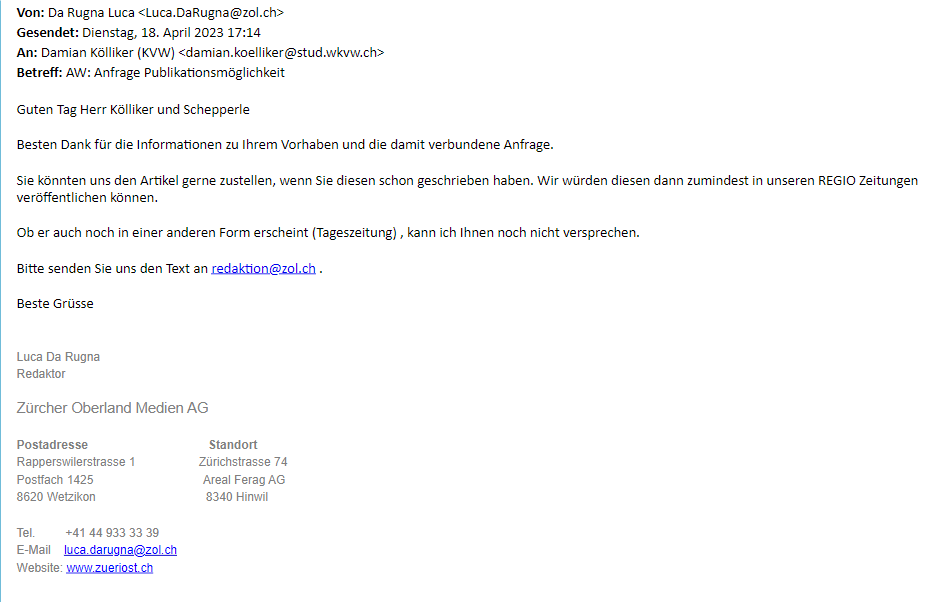
This post was published by Damian & Christian together.
We have received another reply! This time its from a media outlet that is called "Naturfreunde". They seem interested in our project and would like to receive an article to see if the quality is good enough.
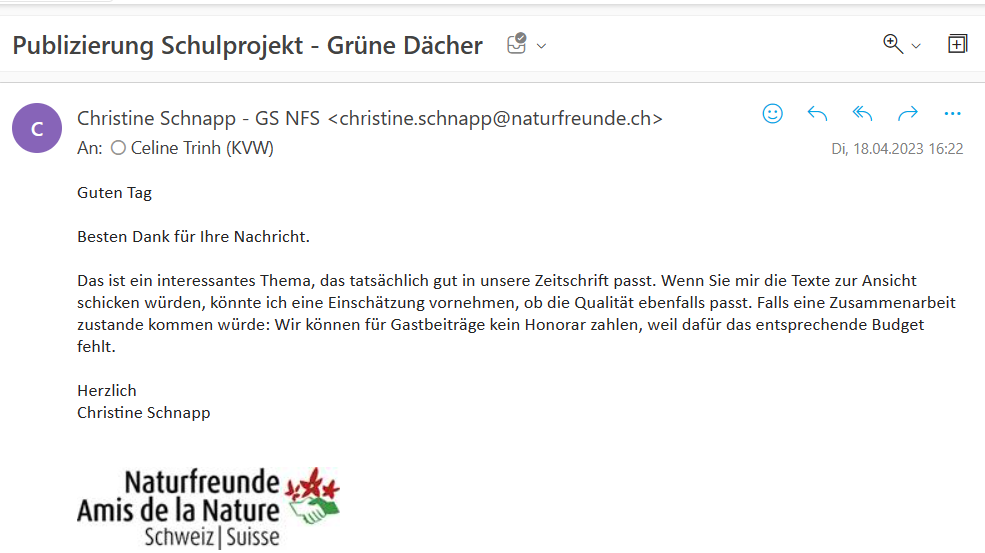
We then replied to them and send them the article:
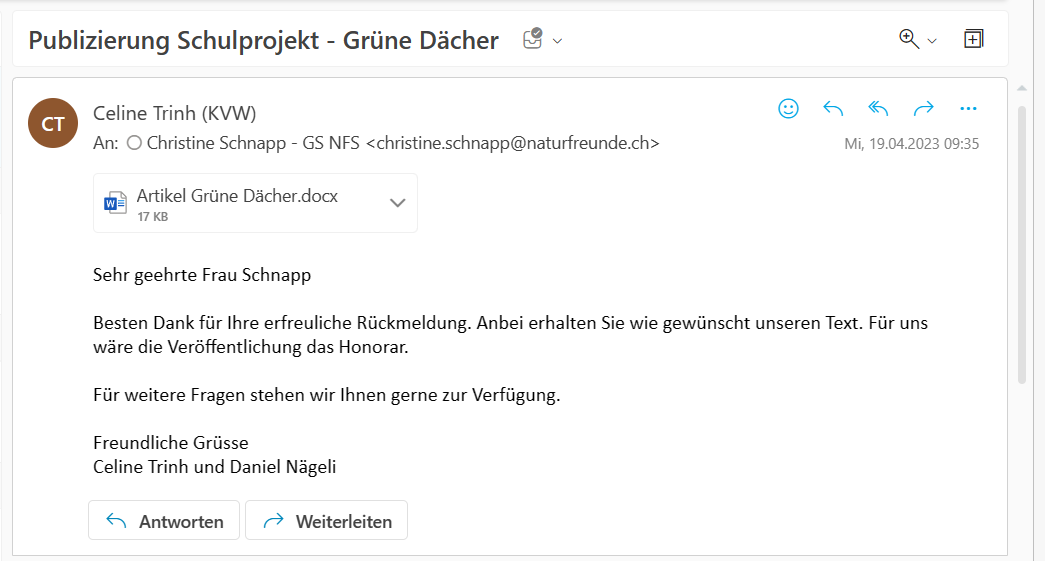
Sadly, we wont be able to publish an article with the media outlet "Naturfreunde" since their expectations are really high and it would go beyond the scope of the IDAF. Here are screenshots of the rest of the E-Mail Conversation:

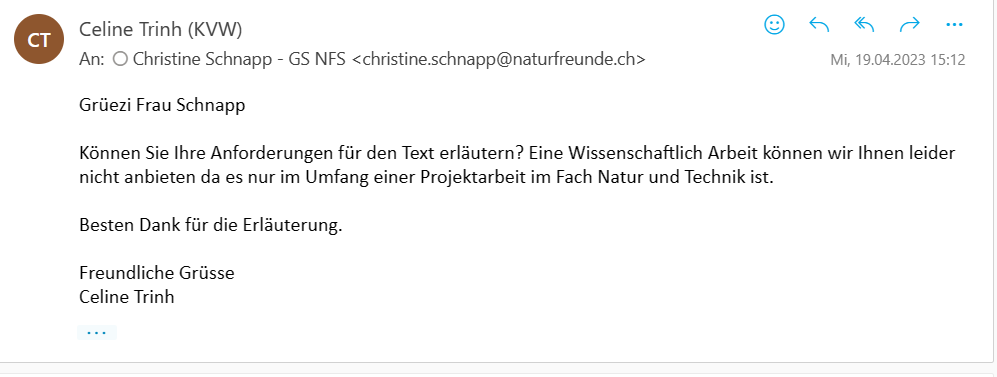
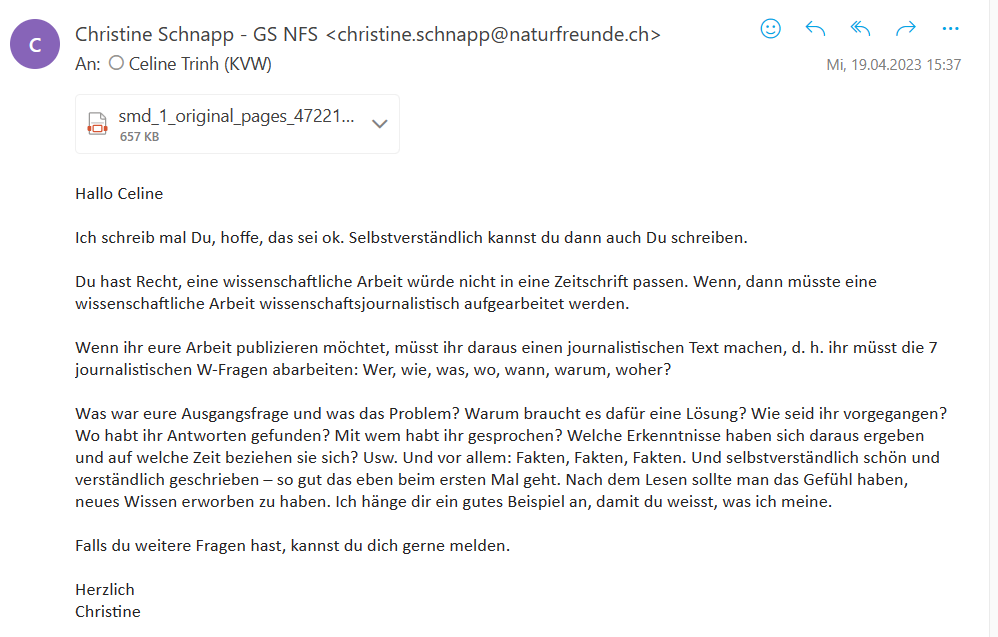
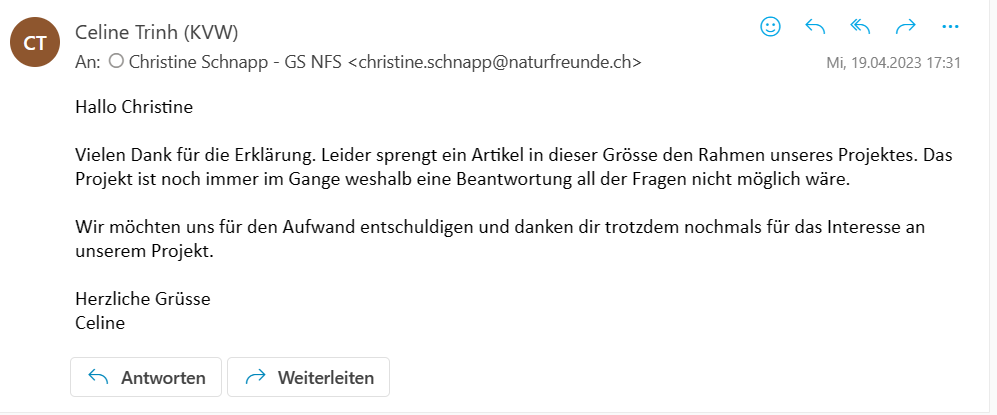
Last week we started writing our article and composing an E-Mail to send to various media channels. Together we first wrote a summary of the interview and the results of the experiment in a document.
Today we created graphics for the article, showing the numbers of the results of the experiment. We have sent the summary and the graphs to our Indian colleagues by E-Mail with the question if they can ever send us a picture of themselves and we can publish this as well as their names.
We also emailed several newspapers asking if they would be interested in our article. We have sent everyone the same mail. We have written to the following newspapers: More...
We have written a draft of a possible article and included it below. Of course, this is still being revised and there may be further additions.
Videospiele und ihre Auswirkungen auf die Umwelt
Wir interessieren uns schon lange für Videospiele und lieben es, diese zu spielen. Als wir uns in der Schule intensiv mit dem Klimawandel auseinandergesetzt haben, stellten wir uns die Frage, wie umweltschädlich Videospiele tatsächlich sind. Deshalb wollten wir mehr über dieses Thema erfahren. über unsere Lehrerin bekamen wir den Kontakt zu drei Schülern aus Indien, Advaith, Fadil und Manas. Sie spielen auch sehr gerne diverse Videospiele und daher dachten wir es wäre eine gute Gelegenheit ihre Sicht zum Zusammenhang zwischen Videospielen und der Umwelt zu erfahren. Sie haben uns erzählt, dass Computerspiele in Indien sehr weit verbreitet sind, jedoch spielen viele Inder nur auf ihren Smartphones oder Laptops. More...
Despite getting a positive response from "Zürcher Oberländer" and them allowing us to send in a draft of our article, we still want to contact some other media outlets since its better to have a couple of options instead of hoping for one to work out.
Therefore we have contacted another two media outlets:
1. Naturfreunde Schweiz (contacted on the 18th april 2023) - reply received! Check seperate post!
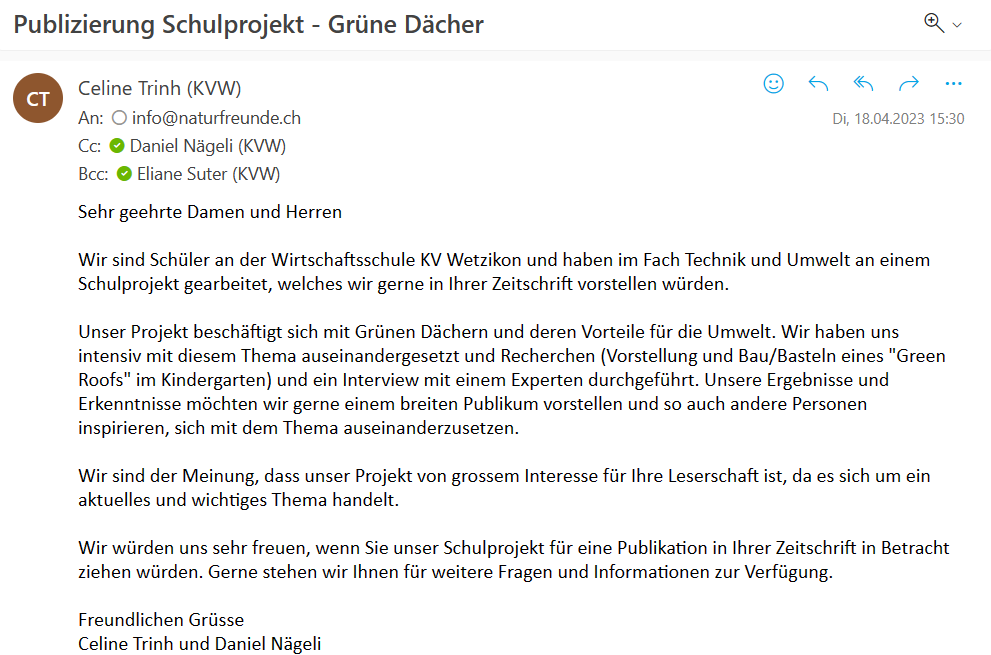
2. Beobachter Schweiz (contacted on the 18th april 2023) - no reply yet
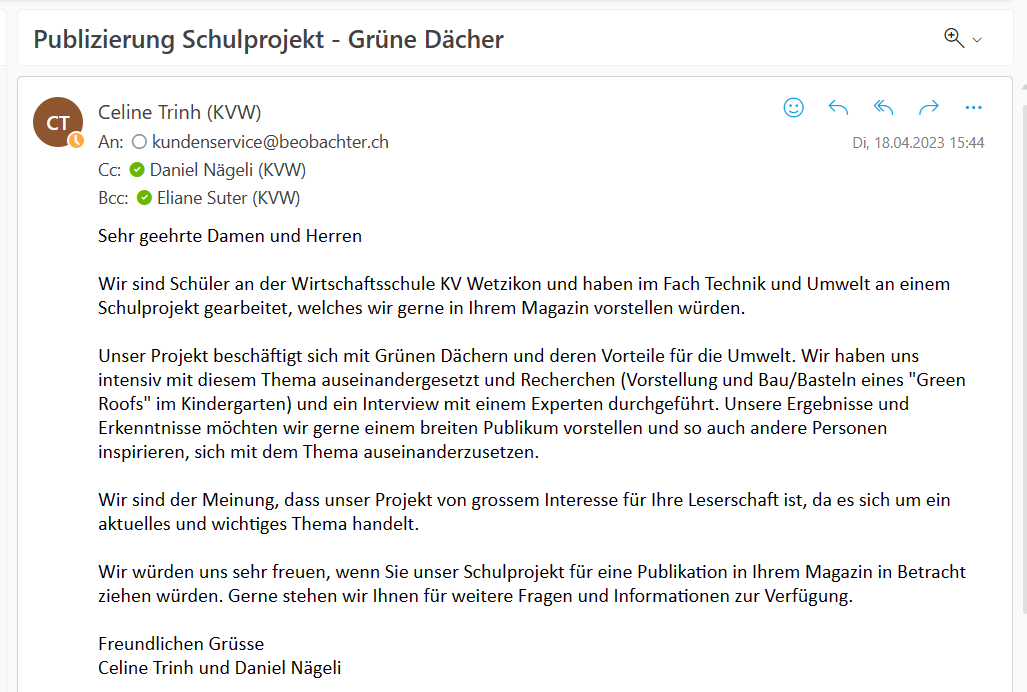
In total we have contacted 6 media outlets and have received a reply from one so far. We hope that we get more replies and the chance to publish our article.